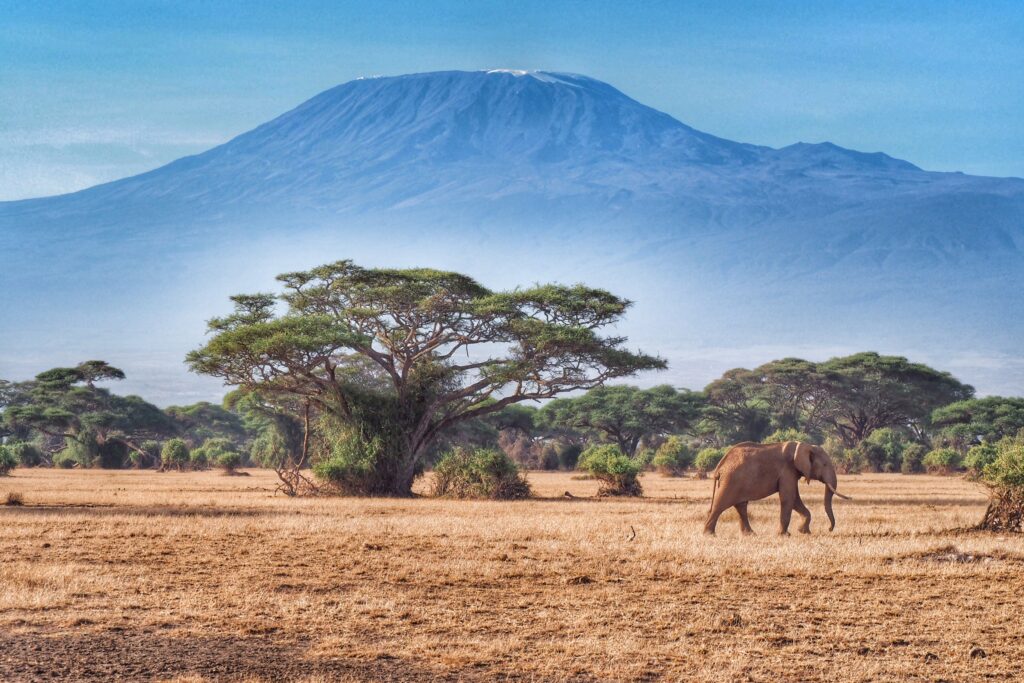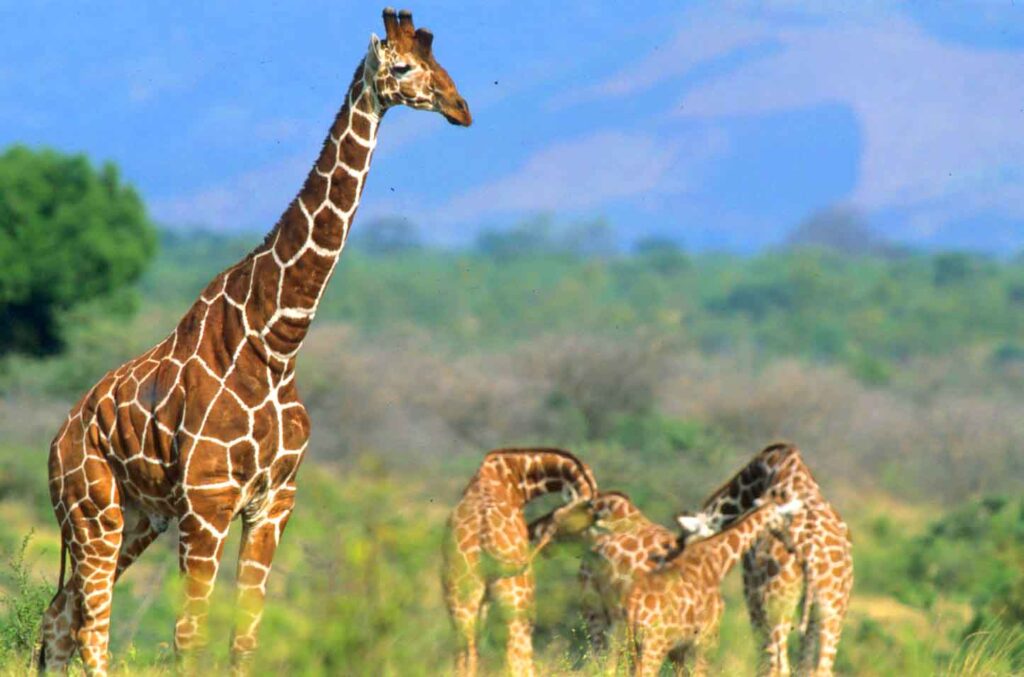
Arusha National Park
it covers a prominent volcanic mountain - Mt. Meru which is the second highest peak in Tanzania after Mt. Kilimanjaro, which is just 60 km away and forms a backdrop to views from the park to the east. With an altitude of 4566 m in the Arusha area north eastern Tanzania, though small, the park has three spectacular landscapes. The shallow alkaline Momella Lakes in the north east have varying alga colors and are known for their shorebirds. In the west, the Meru Crater funnels the Jekukumia River and the peak of Mount Meru lies on its rim. The Ngurdoto crater in the south-east is mainly grassland. The park (Arusha National Park) lies 300kms axis of Africa’s most famous parks, running from Serengeti and Ngorongoro crater in the west to Kilimanjaro National Park in the east. The park’s (Arusha National Park) main gate is 25km east, 58km from Moshi and 35km from Kilimanjaro International Airport (KIA).
Ngorongoro Conservation Area
A visit to the Ngorongoro Crater is an experience of a lifetime. There are few places that have wildlife densities and variety on this level. It is not unusual to see the Big Five in one day – and all this in the most amazing setting with a backdrop of the 600m/1,968ft-high crater wall.
The Ngorongoro Crater offers some of the best wildlife viewing in Africa. All the major safari animals occur in great numbers. The resident population of black rhino is a real treat, as rhino are very difficult to spot elsewhere in Tanzania. The crater is also home to some very impressive elephant bulls with huge tusks. Lake Magadi often harbors large flocks of flamingo.
The Ngorongoro Conservation Area, as a whole, is stunningly beautiful. Aside from the well-known Ngorongoro Crater, Empakaai and Olmoti craters are scenic highlights as well. Both the Ngorongoro and Empakaai craters regularly have flocks of flamingo. The forested crater rim of the Ngorongoro crater is in stark contrast with the crater floor, which consists mostly of grassland. Another feature on the crater floor is Lerai forest, a beautiful, atmospheric, yellow fever tree forest.
Weather & Climate Conditions at Ngorongoro vary depending on the altitude. Higher up, in the crater itself, it can get quite cold at night, particularly up on the rim. But down in the greater conservation area it stays quite warm. During the area’s Dry season (June to October) there’s barely a cloud in the sky. In the Wet season (November to May) you’ll confront two periods of rain separated by a brief dry spell.
Best Time to Visit You can spot wildlife down on the crater floor at any time of year. But the viewing is better in the Dry season (June to October) when the undergrowth has receded and animals tend to gather conveniently around waterholes and rivers. The only advantages the wetter months offer are fewer people and low-season accommodation rates.
Lake Manyara National Park
Lake Manyara NP is a small park at the base of the Rift Valley escarpment. Its groundwater forest offers a nice change of scenery from the more savannah-dominated parks. Although the park is known for tree-climbing lions, big cats aren’t that easily seen. Elephant are prolific and are the main attraction.

Wildlife
This park is known for its large elephant population. The big cats are present, but not seen that easily. The forest patch is home to habituated troops of olive baboon and blue monkey. Buffalo, giraffe and several antelope species are easily encountered on a drive.
Tarangire national park
Tarangire is one of the more seasonal parks in northern Tanzania, with a lot of migratory movement within the greater Tarangire ecosystem. In the Dry season, between June and October, large herds of animals are attracted to the Tarangire River. At this time, the elephant numbers are spectacular and the park should be part of any safari in northern Tanzania.
Best Time to Visit
In the wetter months (November to May) tourists are fewer and the local wildlife more dispersed, with water easily found around the park. The animals are much easier to find during the Dry season (June to October), as they head to the area’s remaining water sources. Pack plenty of warm clothes for early-morning game drives at this time of year, as it’s cold when the sun is low in the sky.
Wildlife
Herds of up to 300 elephant can be found, looking for underground streams in the dry riverbeds, while migratory wildebeest, zebra, buffalo, impala, gazelle, hartebeest and eland crowd the shrinking lagoons. Dry-country antelope such as fringe-eared Oryx and the long-necked gerenuk are also present but rare to see. Abandoned termite mounds often house mongoose colonies. All the main predators are present, but because of thick vegetation, not spotted as often as in some of the other parks in northern Tanzania.
Scenery
The park’s dominant feature is the Tarangire River. Although it gets very dry, the park is relatively thickly vegetated with acacia shrubs and mixed woodland. Most memorable are the huge baobab trees dotted around in big numbers. The south and east of the park has a big seasonal swamp network, which is an important water catchment area.
Weather & Climate
Tarangire has a fractured Wet season (November to May). Light showers, or the ‘short rains’, tend to close out the year, while the ‘long rains’ see heavier falls from March through May. In between is a brief dry period that gives a taste of what’s to come in the Dry season proper (June to October).
Other places to visit in Tanzania
- Mkomazi game reserve
- Saadani national reserve
- Mikumi national park
- Udzungwa mountains national park
- Ruaha national park
- © 2023. All Rights Reserved.






